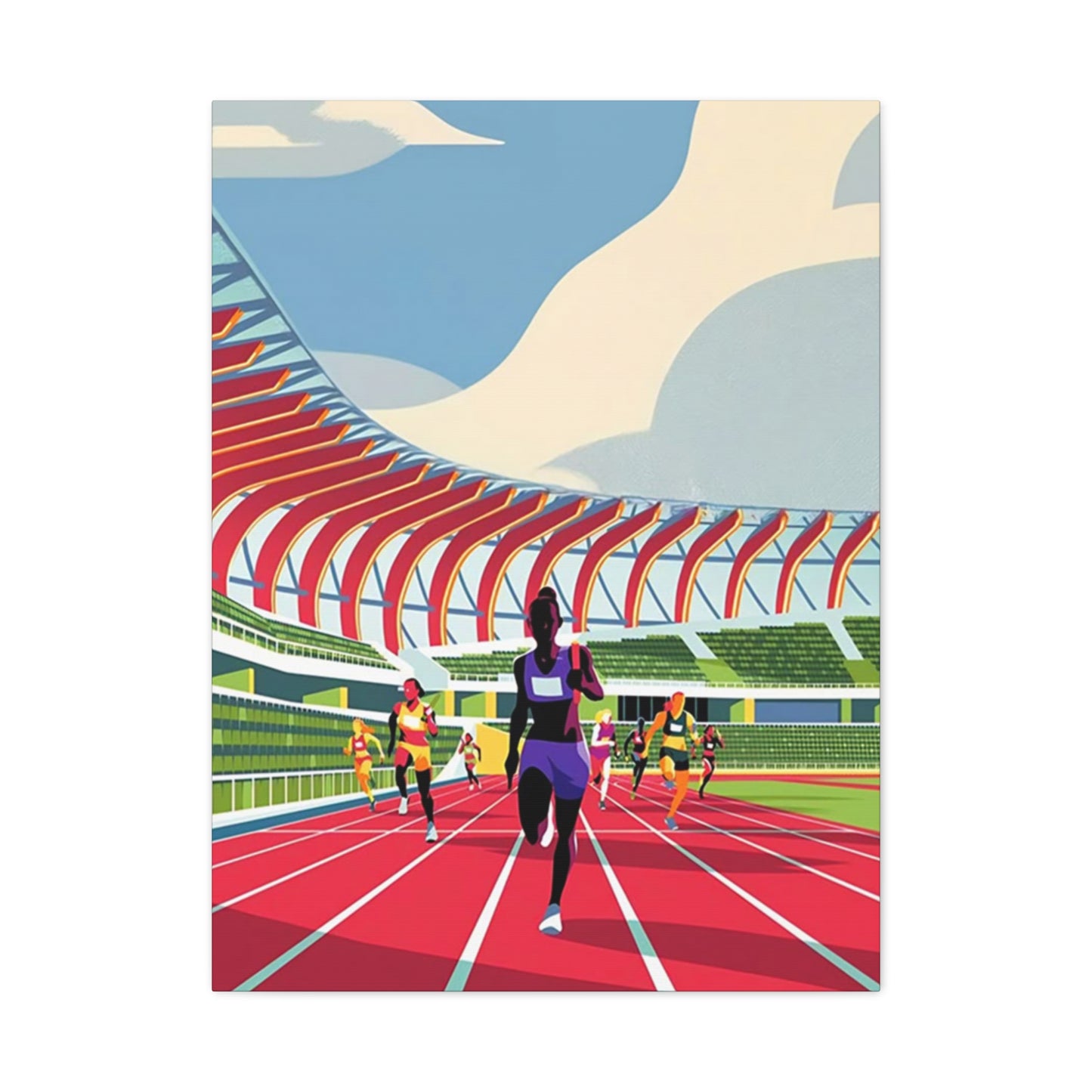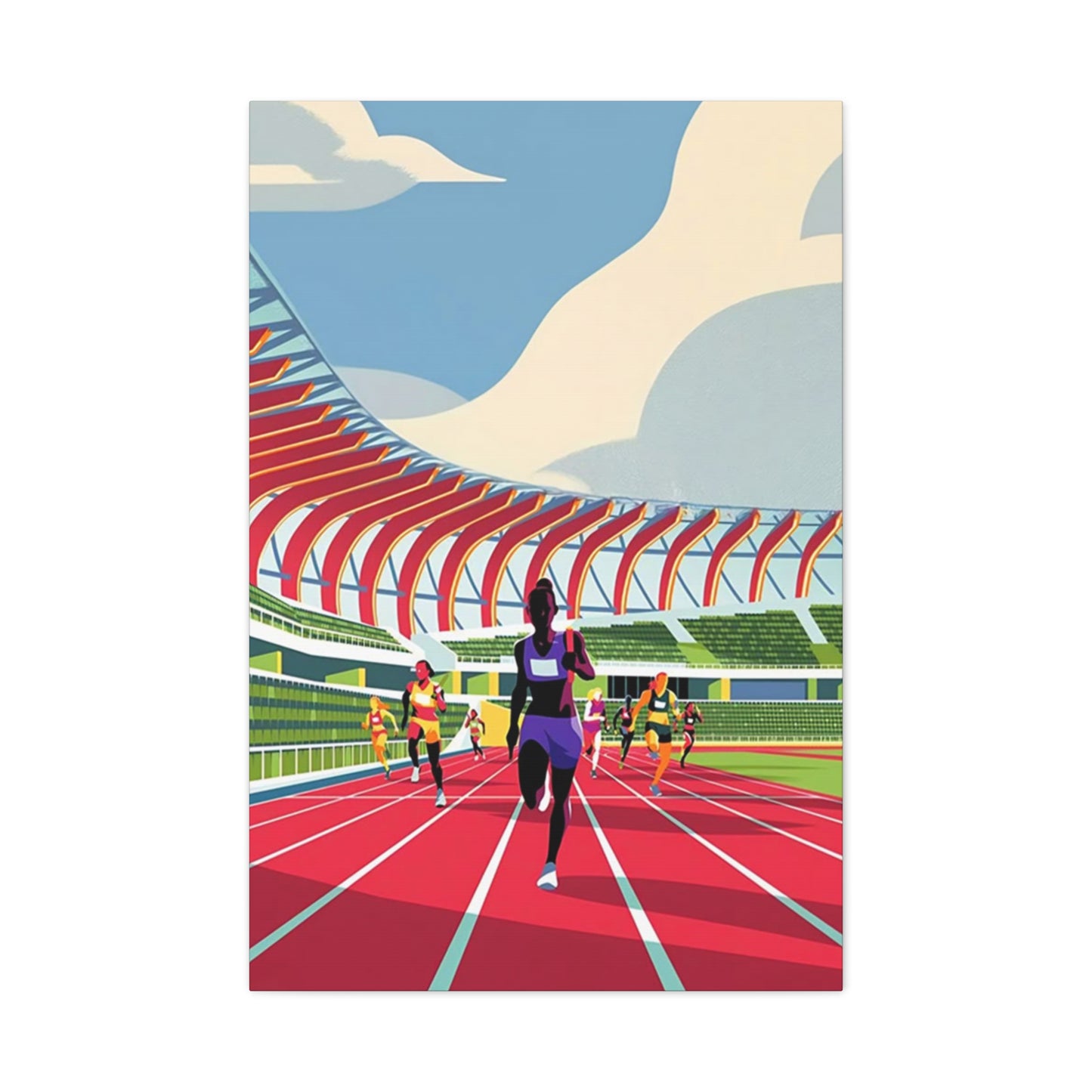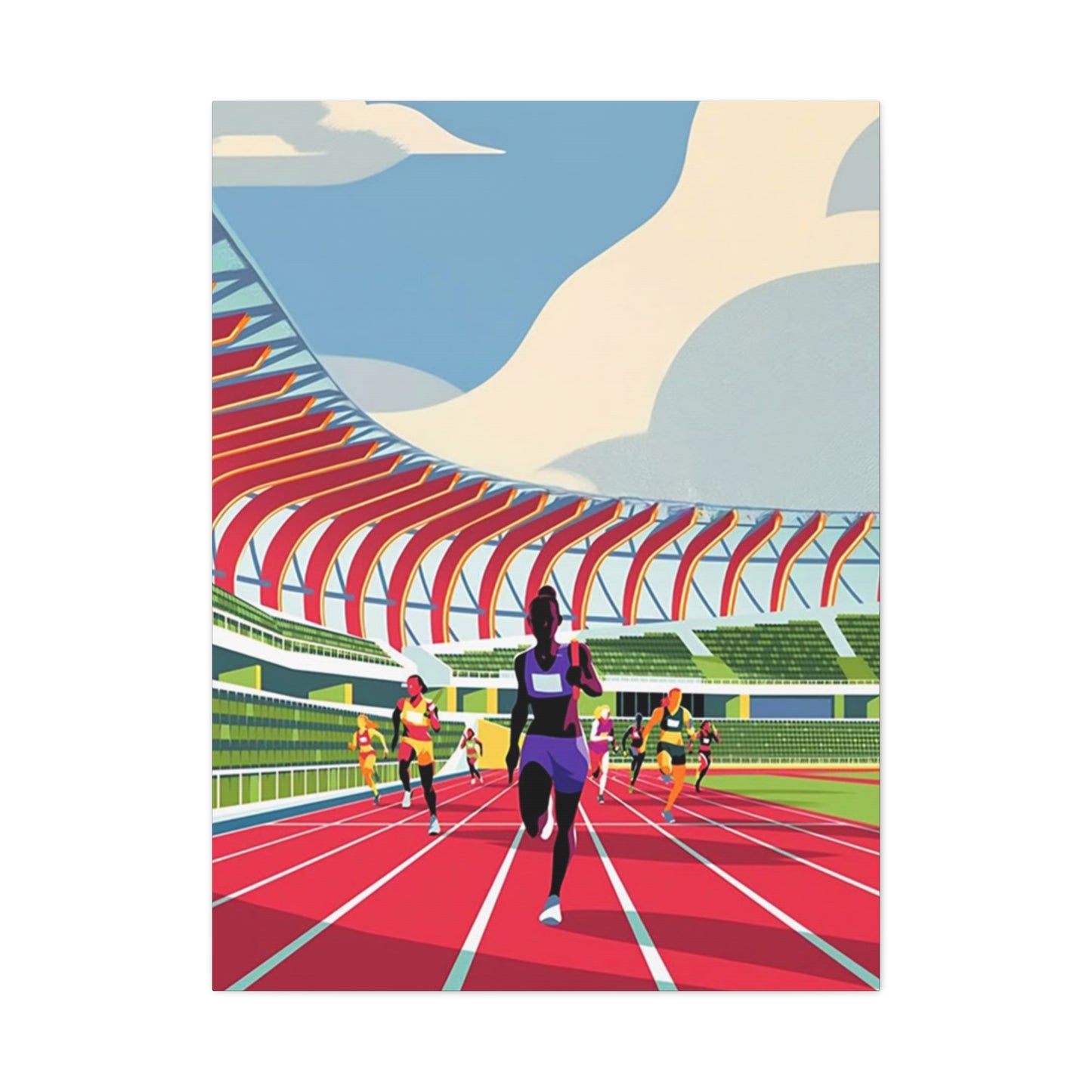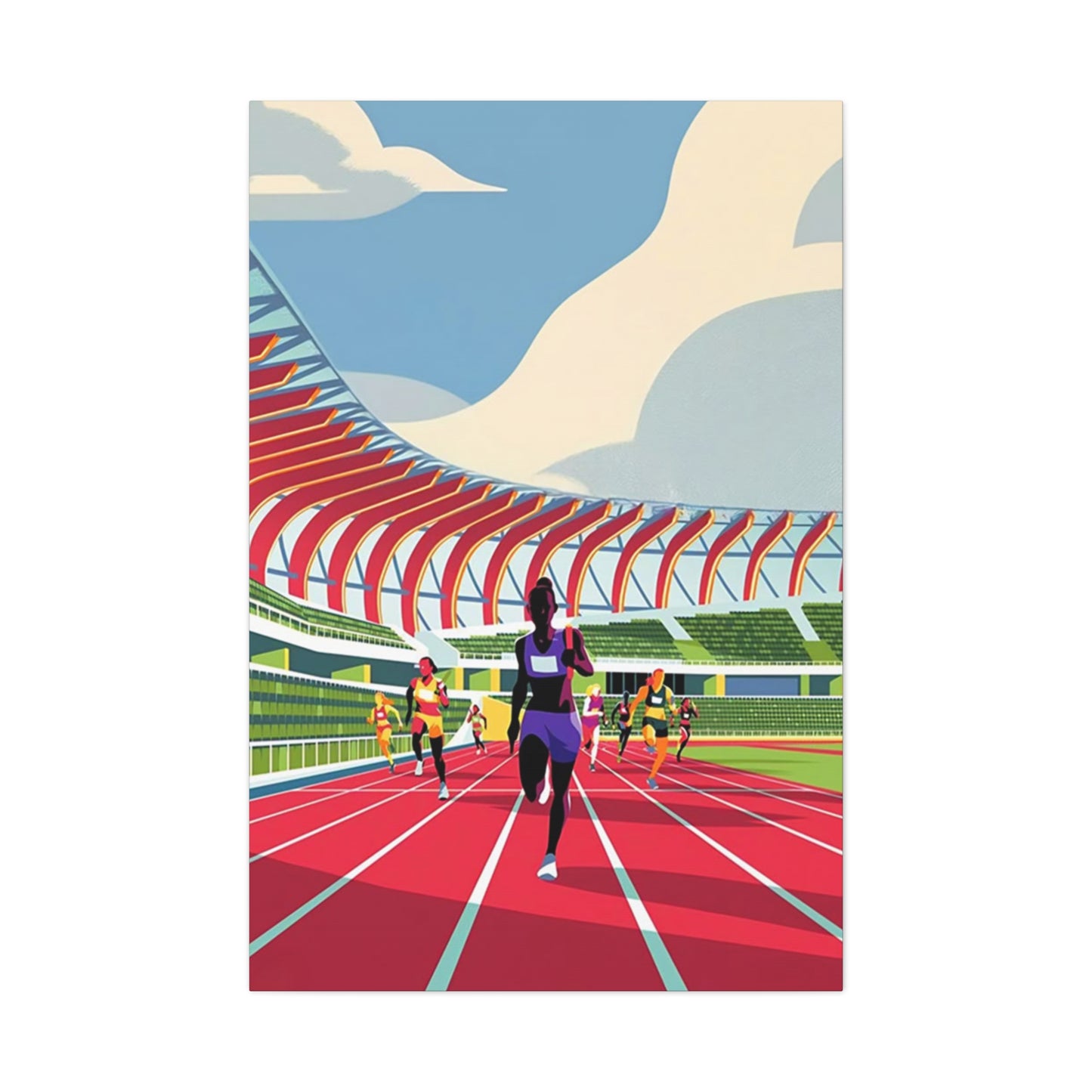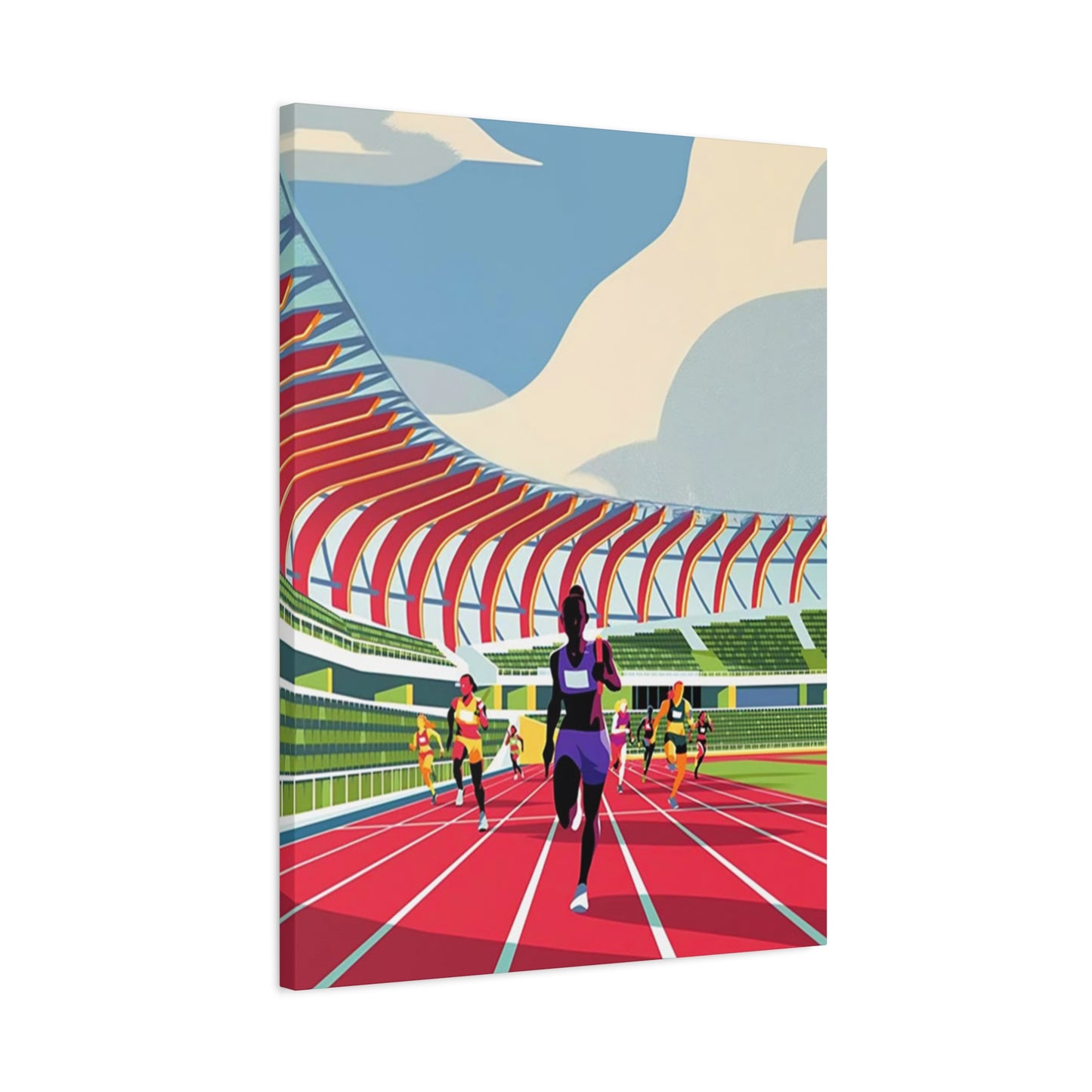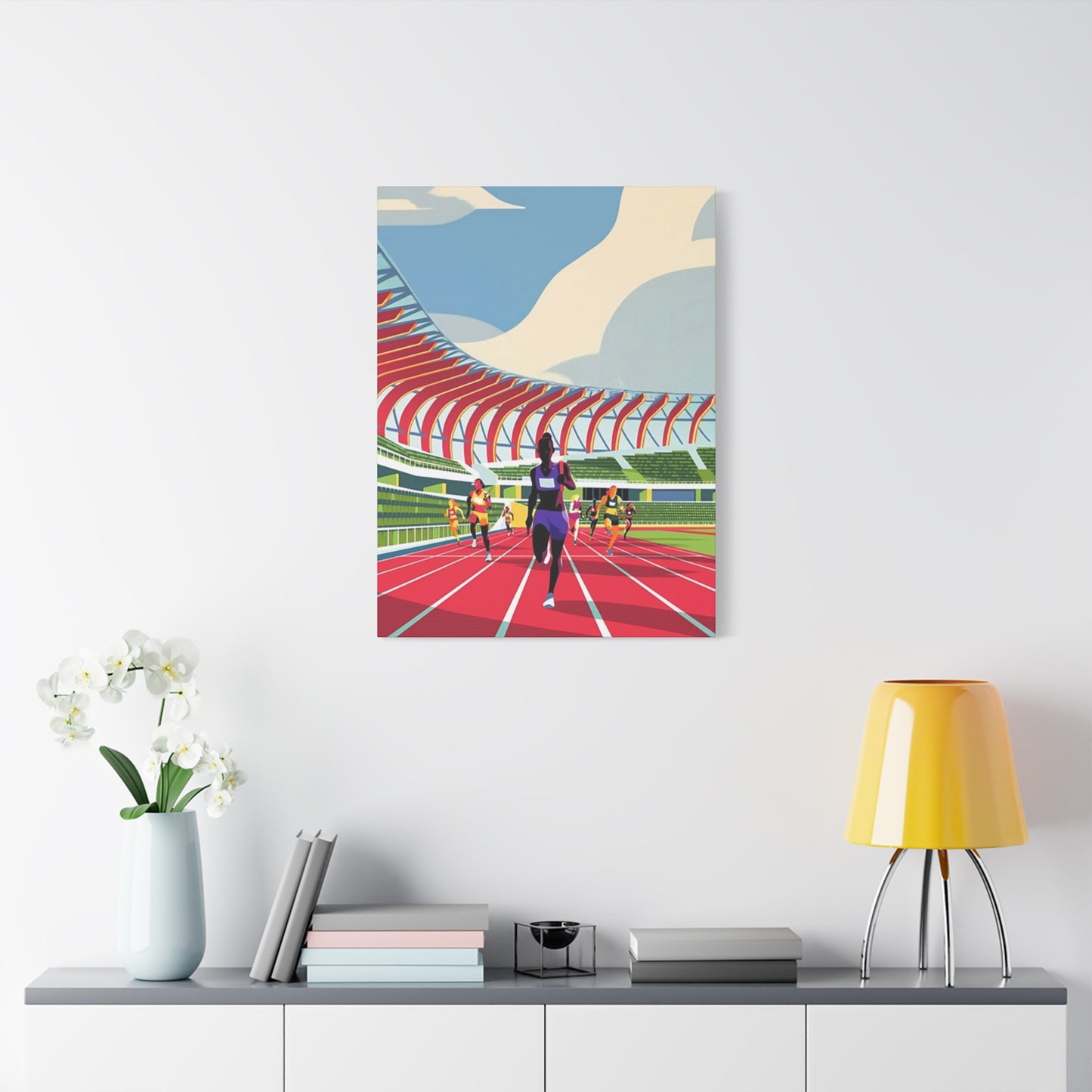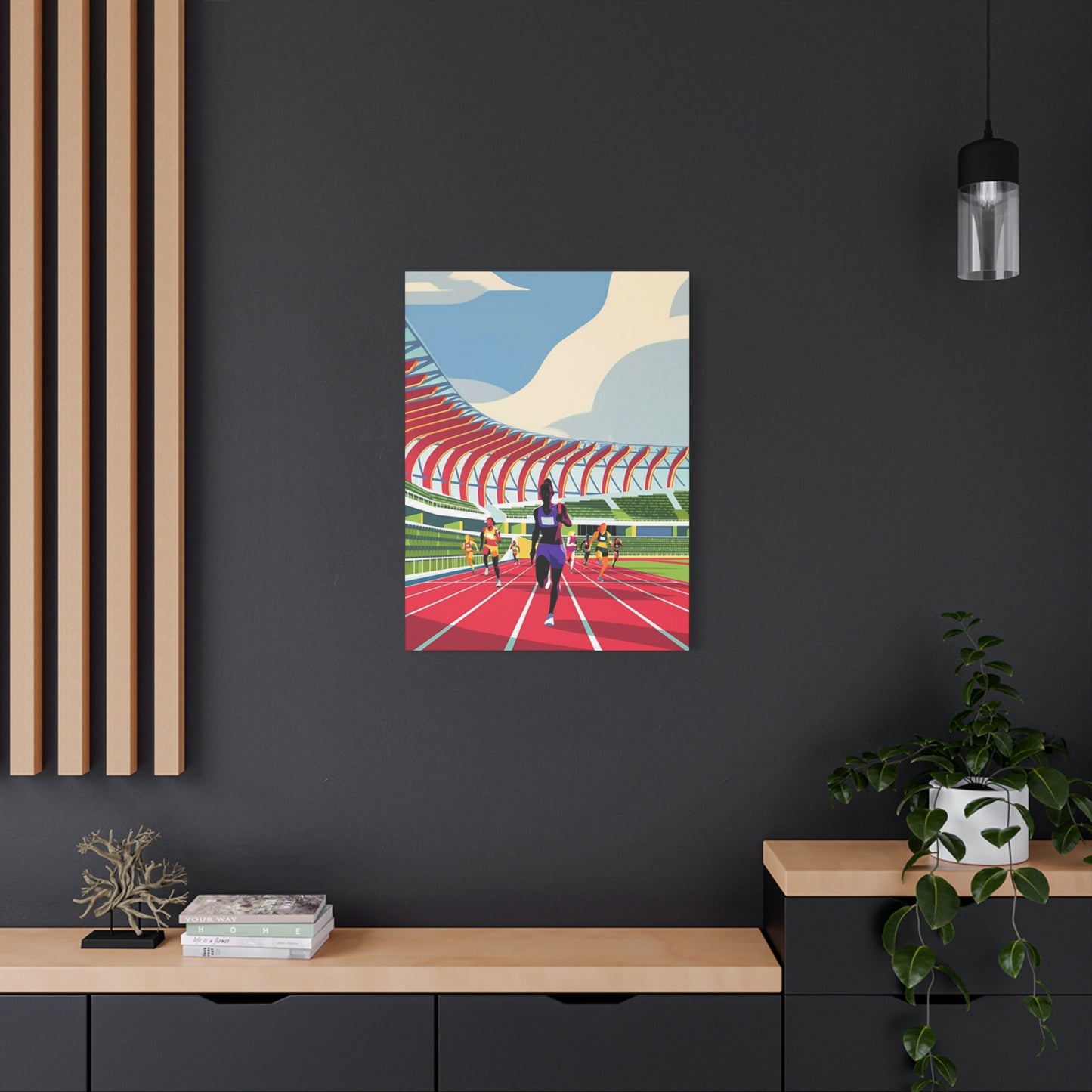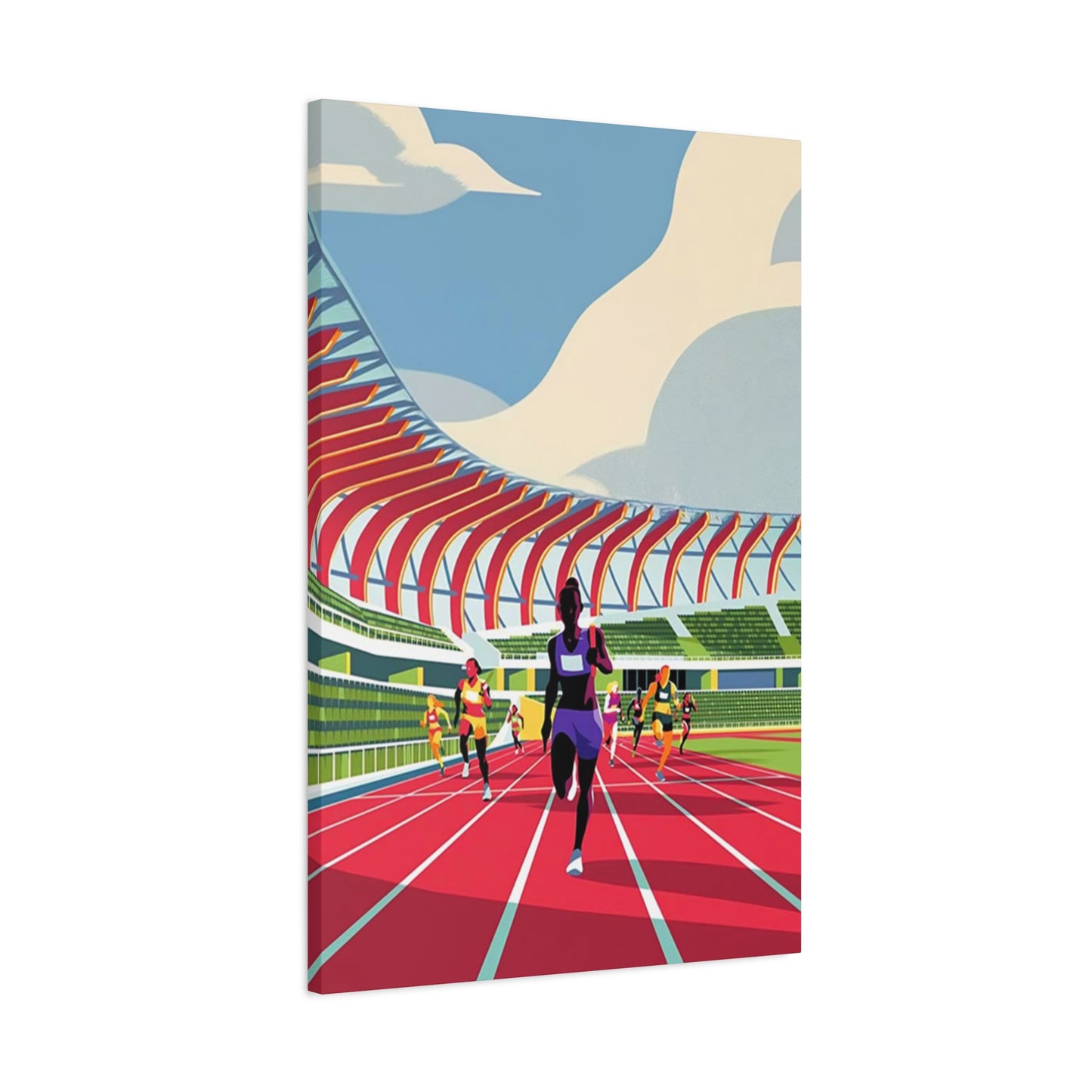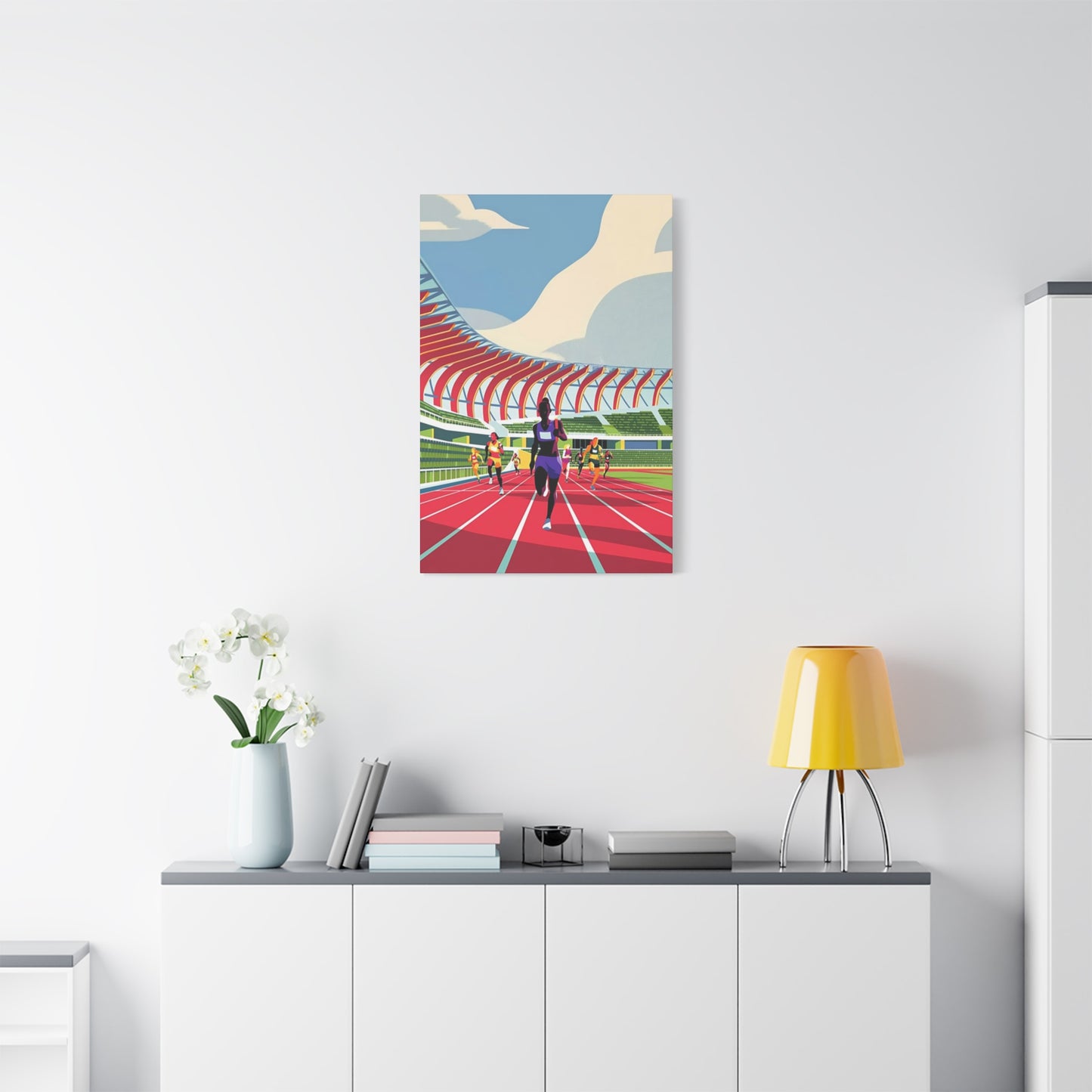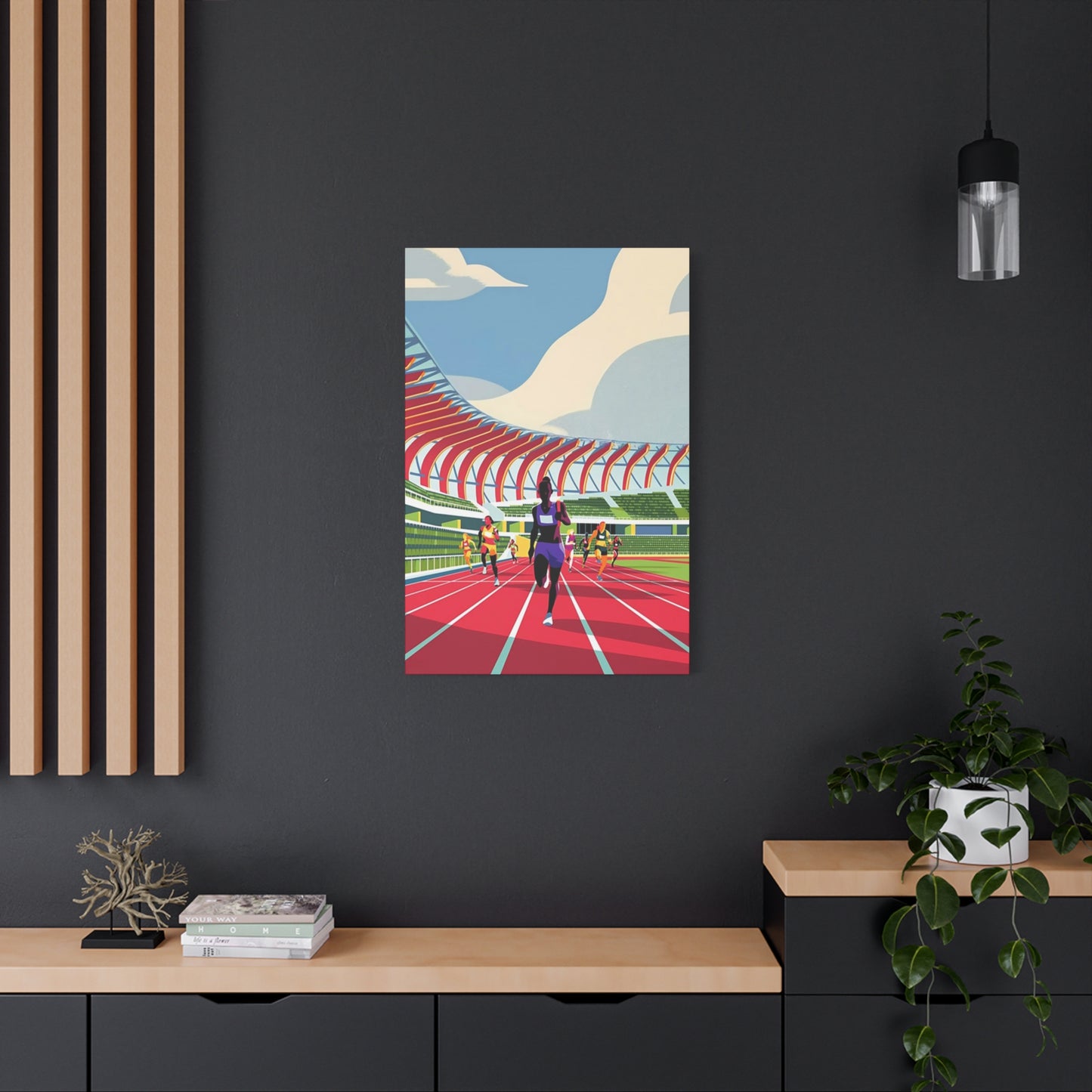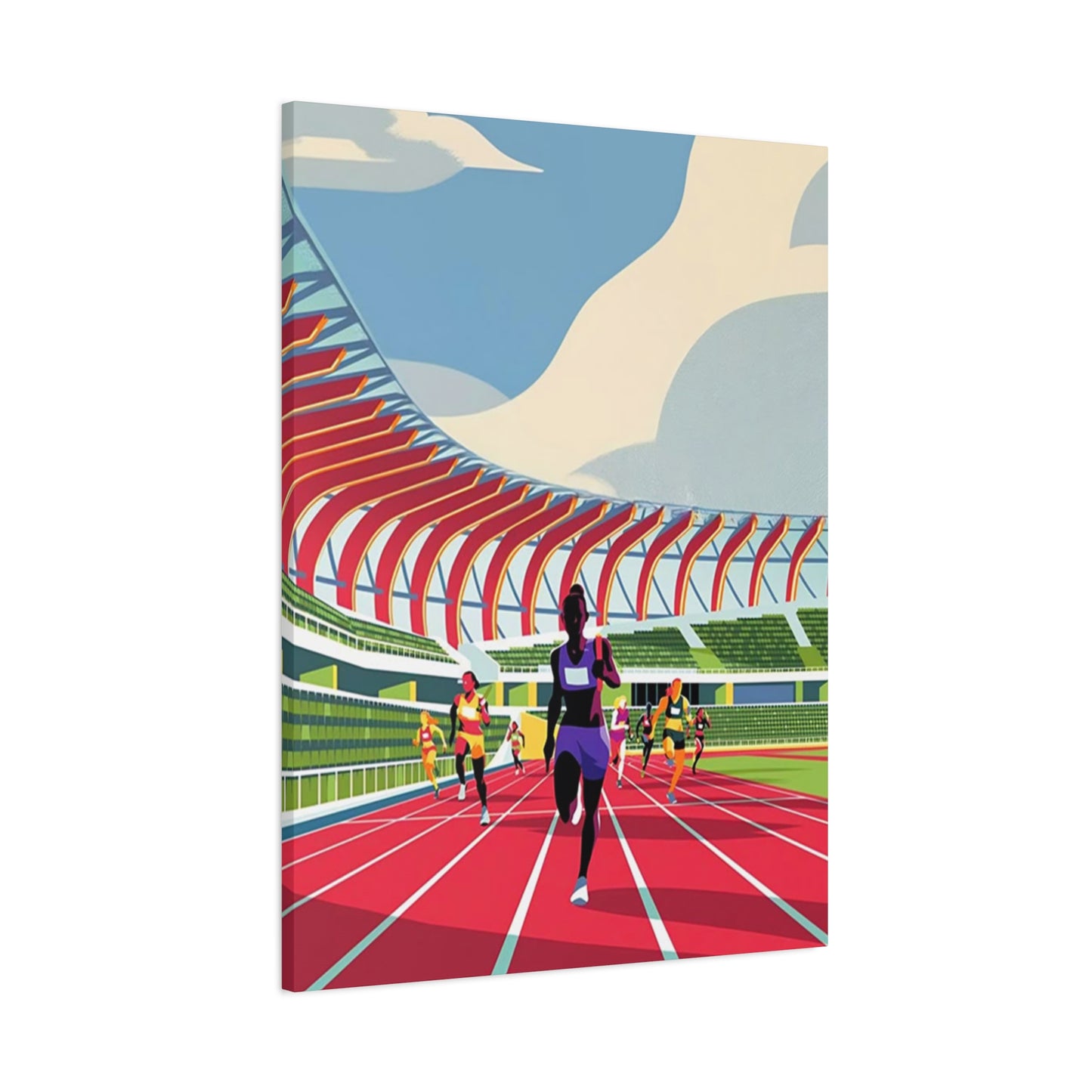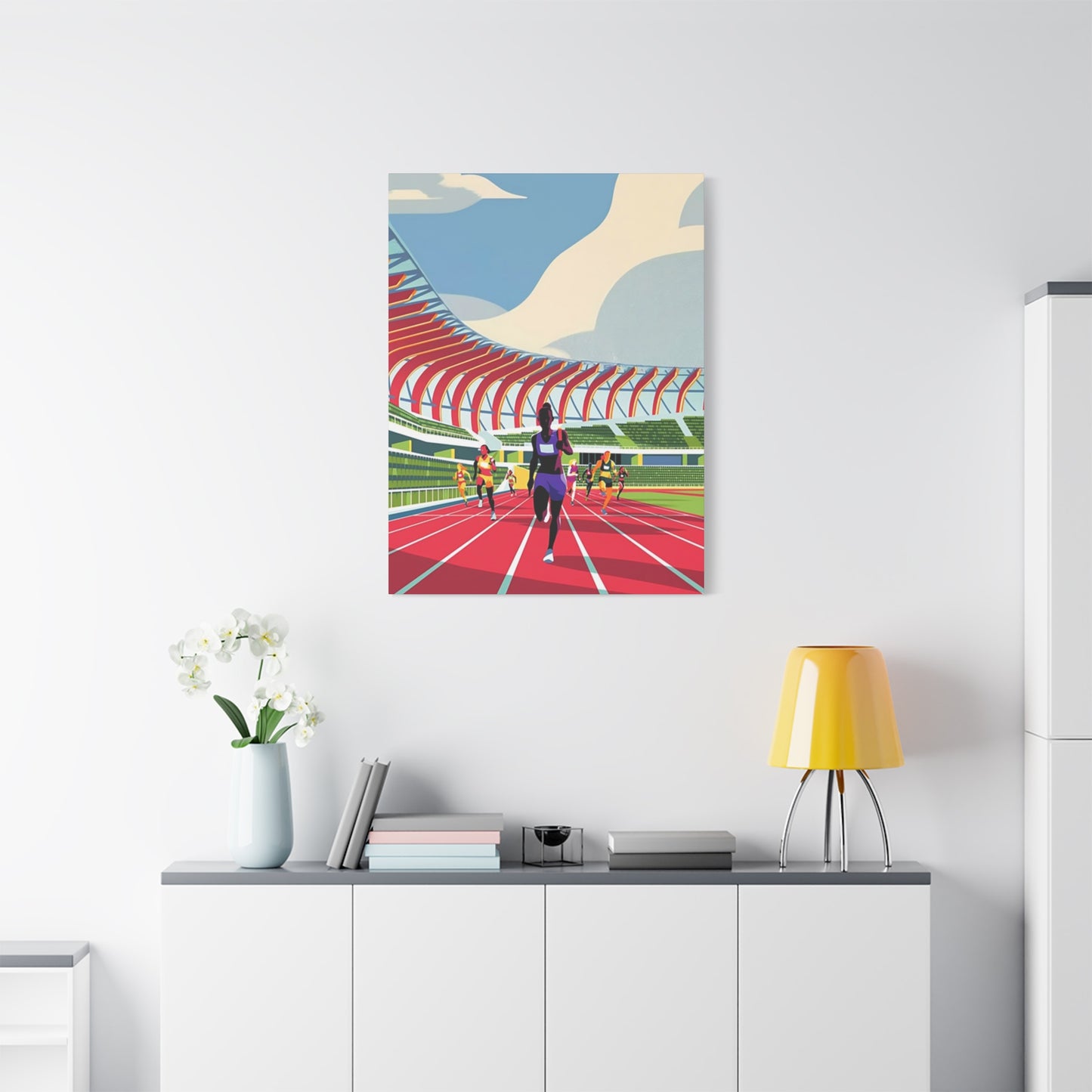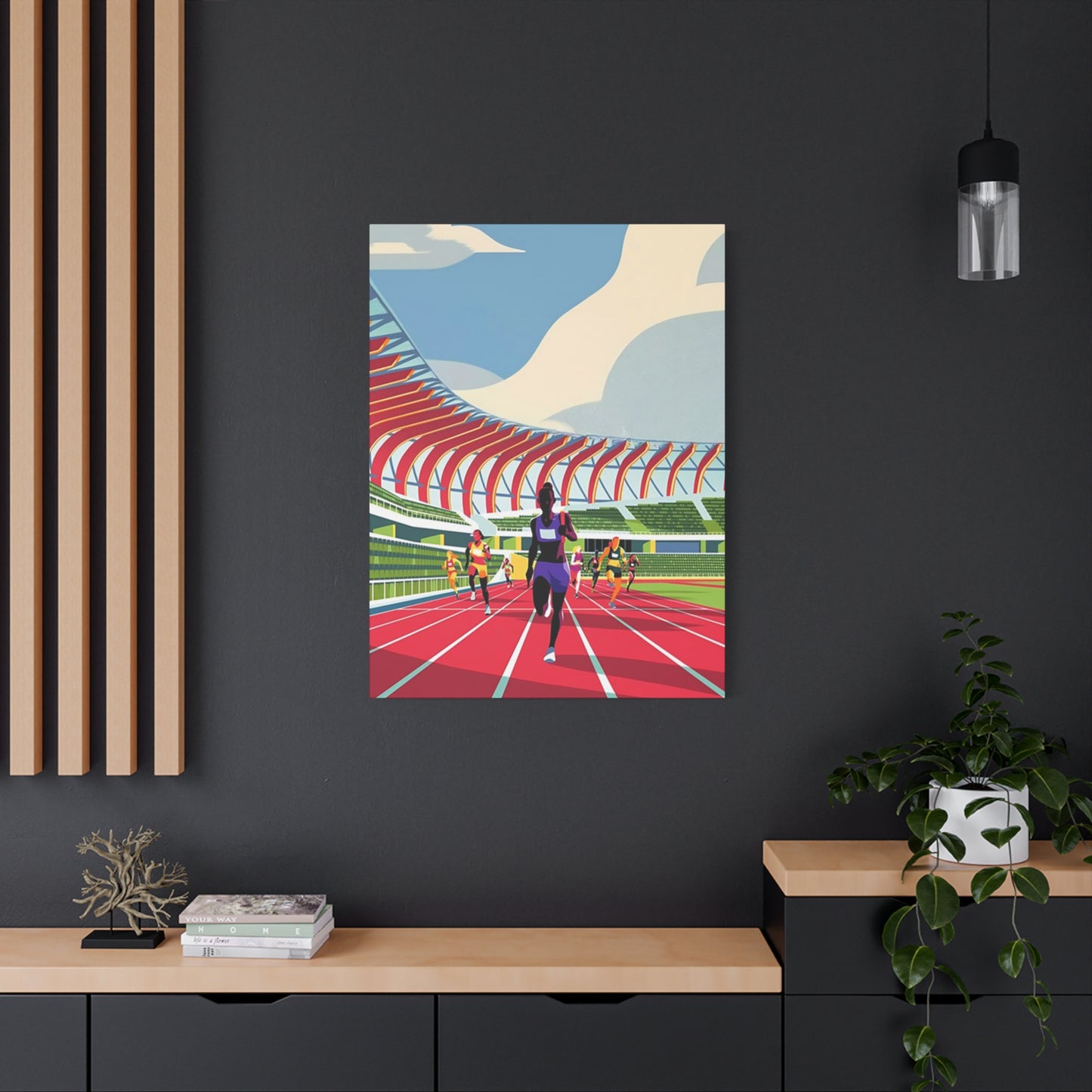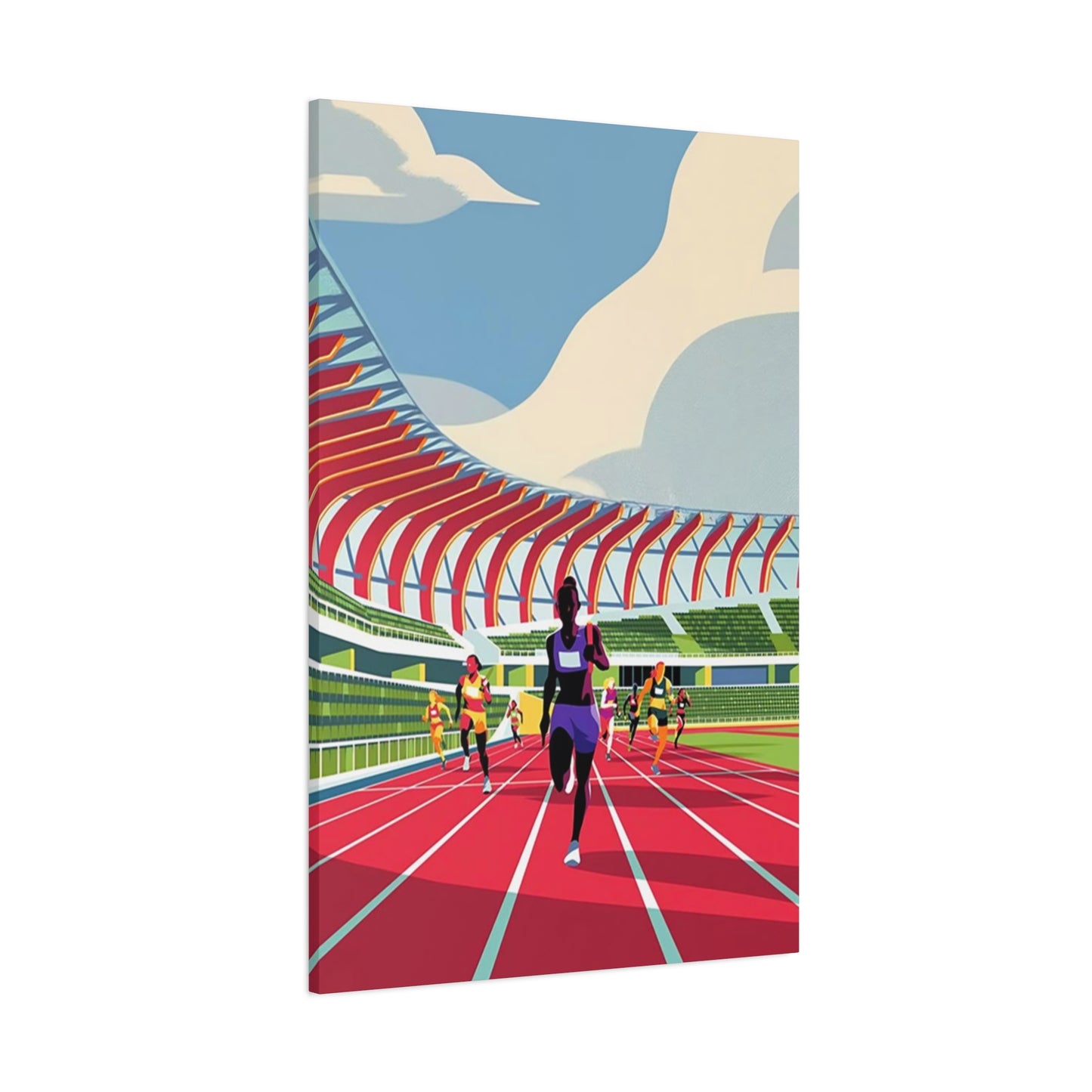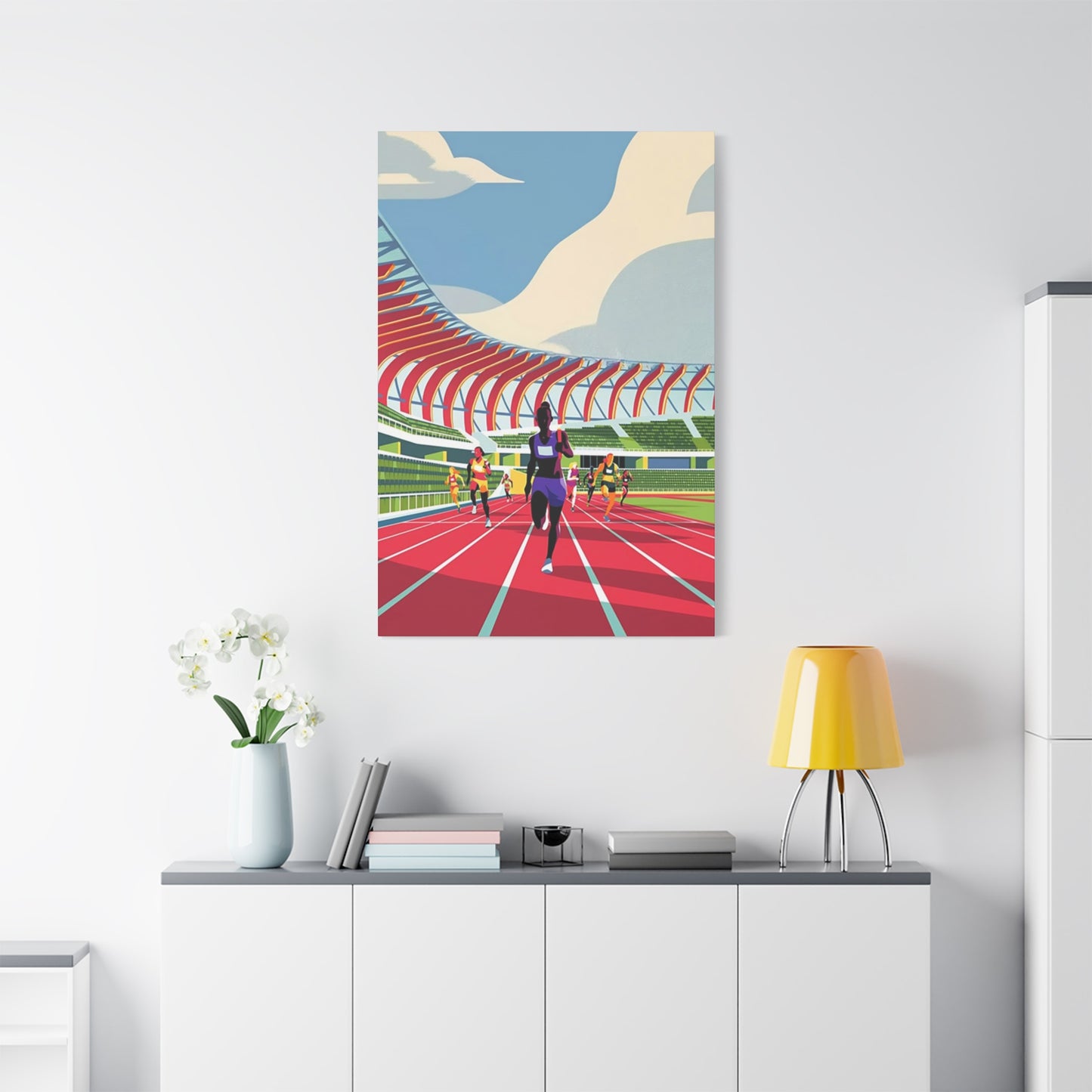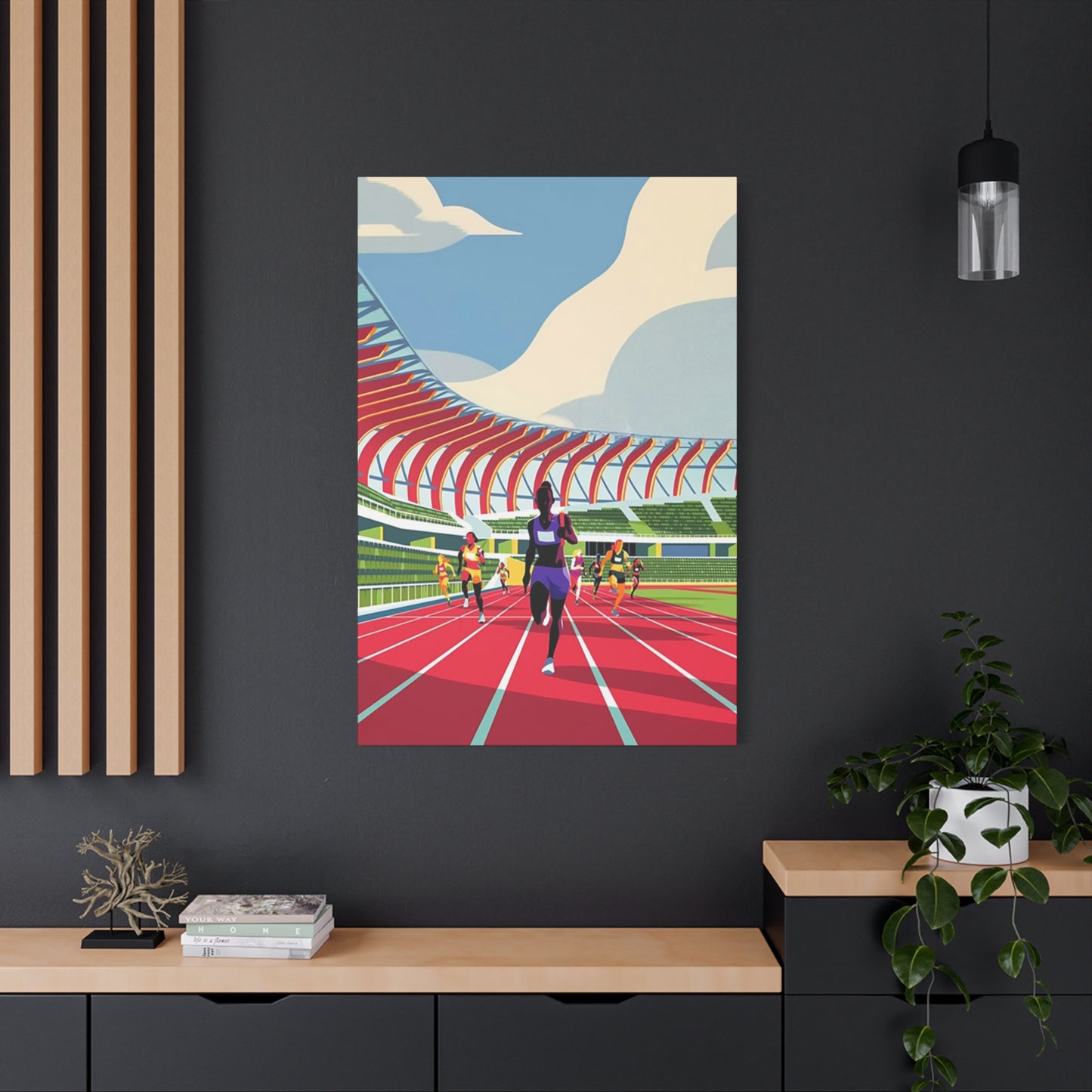Track Running Wall Art That Energizes Your Space and Elevates Performance
The world of athletic decor has evolved dramatically, with visual representations of movement, speed, and determination becoming essential elements in personal and public spaces. Athletic artwork celebrating the sport of racing on foot offers more than aesthetic appeal; it creates environments that inspire action, commemorate achievement, and fuel the competitive spirit within us all. Whether adorning the walls of personal training areas, professional facilities, educational institutions, or living spaces, these visual tributes to human velocity serve as constant reminders of what the body can accomplish through dedication and perseverance.
The intersection of athletics and visual art has produced countless interpretations of human motion, from photographic captures of explosive starts to abstract representations of endurance. These artistic expressions resonate with competitive athletes, casual fitness enthusiasts, coaches, students, and anyone who appreciates the raw beauty of physical excellence. The selection of appropriate visual elements for your environment depends on personal taste, the intended atmosphere, and the emotional response you wish to evoke in those who occupy the space.
Uplifting Visual Displays That Ignite Athletic Passion
Creating an environment that fuels determination requires more than simple decoration. Visual displays featuring athletes in full stride, quotes from legendary competitors, or symbolic representations of victory serve as psychological anchors that reinforce commitment during challenging moments. These artistic installations work on both conscious and subconscious levels, reminding viewers of their capabilities and goals even during periods of doubt or fatigue.
The psychology behind motivational imagery reveals that our brains respond powerfully to visual stimuli associated with achievement and progress. When surrounded by representations of athletic excellence, individuals experience increased activation in brain regions associated with goal-setting and self-efficacy. The constant visual reinforcement creates neural pathways that associate the environment with high performance, making it easier to access motivated states when beginning training sessions or facing difficult workouts.
Selecting imagery that resonates personally creates the strongest motivational impact. Some athletes respond to photographs of explosive power captured in the starting blocks, while others find inspiration in depictions of endurance during the final stretch. Textual elements featuring wisdom from accomplished competitors add intellectual depth to visual appeal, creating multi-layered inspiration that engages both emotional and rational thinking. The combination of powerful imagery with carefully selected words creates a synergistic effect more potent than either element alone.
Placement strategy significantly affects the motivational power of athletic artwork. Positioning inspirational pieces at eye level where they naturally draw attention during rest periods maximizes their psychological impact. In training facilities, placing motivational displays near areas where athletes typically experience fatigue creates timely reminders of purpose and capability. The strategic distribution of inspiring visuals throughout a space maintains consistent psychological support rather than concentrating it in a single location.
Color psychology plays a crucial role in motivational effectiveness. Bold reds and oranges convey energy and urgency, making them ideal for sprint-focused environments. Blues and purples suggest endurance and mental fortitude, appropriate for spaces dedicated to distance training. Understanding how different hues affect mood and energy allows for intentional design choices that support specific athletic goals. The interplay between color, composition, and subject matter creates comprehensive motivational environments that support peak performance.
The authenticity of motivational displays affects their long-term impact. Generic or overly commercialized imagery loses effectiveness over time as viewers become desensitized to its message. Personally meaningful visuals, whether photographs of personal achievements, images of role models, or artwork representing specific goals, maintain psychological potency through continued exposure. The emotional connection between viewer and image prevents the habituation that diminishes the impact of generic motivational content.
Premium Artistic Representations Celebrating Athletic Excellence
The market for athletic artwork has expanded to include sophisticated artistic interpretations that appeal to collectors and sports enthusiasts alike. High-quality reproductions of sports photography, limited edition prints by recognized artists, and custom commissioned pieces represent the premium segment of this category. These elevated artistic works combine technical excellence with emotional impact, creating pieces worthy of prominent display in both residential and commercial settings.
Premium athletic artwork often features superior production techniques that enhance visual impact and longevity. Archival printing processes ensure color stability and resistance to fading, protecting the investment for decades. Professional framing with conservation-grade materials provides both aesthetic enhancement and physical protection. The attention to production quality distinguishes collectible athletic art from disposable decoration, creating pieces that appreciate in both financial and sentimental value over time.
Photography capturing split-second moments of athletic performance requires exceptional technical skill and artistic vision. The decisive moment when an athlete launches from starting blocks, the expression of determination during a challenging section, or the celebration following victory each tell complete stories in single frames. Master sports photographers understand body mechanics, anticipate peak action moments, and position themselves to capture angles that emphasize power, grace, or emotion. Their work transcends simple documentation to become fine art worthy of gallery presentation.
Contemporary artists have begun exploring athletic themes through various media beyond photography. Painters working in styles from photorealism to abstract expressionism interpret the human form in motion, creating unique visual experiences that complement but differ from photographic accuracy. Sculptors translate the dynamic lines of sprinting bodies into three-dimensional forms that cast compelling shadows and invite viewing from multiple angles. Digital artists manipulate images and create composite works that push the boundaries between documentation and imagination, expanding the artistic possibilities within athletic themes.
The biographical context surrounding certain artistic works adds layers of meaning that enhance their appeal to collectors. Photographs taken during historic competitions, artwork created by athlete-artists documenting their own experiences, or pieces commissioned to commemorate significant achievements carry narratives that increase their cultural significance. Understanding the stories behind artistic works transforms them from attractive decoration into cultural artifacts that preserve important moments in athletic history.
Investment in premium athletic artwork requires consideration of both aesthetic appeal and practical factors. Authenticity verification ensures that limited edition pieces genuinely represent stated production numbers and artist attribution. Provenance documentation establishes ownership history and confirms legitimate acquisition. Condition assessment identifies any existing damage or degradation that might affect value. These practical considerations complement aesthetic judgment when making significant acquisitions for personal collections or institutional displays.
Encouraging Words Featured on Athletic Visual Displays
The combination of powerful imagery with carefully selected text creates multilayered inspiration that engages viewers intellectually and emotionally. Wisdom shared by legendary athletes provides perspective earned through years of competition and training. Philosophical statements about perseverance, dedication, and self-improvement resonate across athletic disciplines and life circumstances. Literary excerpts celebrating human achievement add cultural depth to athletic themes. The textual component of athletic artwork invites contemplation and reflection beyond the immediate visual impact.
Selecting appropriate textual content requires consideration of audience, purpose, and environment. Aggressive, competitive language motivates some individuals while alienating others. Inclusive, encouraging statements create welcoming environments in educational or community settings. Philosophical or poetic language elevates the intellectual dimension of spaces dedicated to physical training. The tone and content of textual elements should align with the overall purpose of the space and the characteristics of those who use it.
Typography significantly affects how textual content is received and remembered. Bold, sans-serif fonts convey directness and energy, appropriate for straightforward motivational statements. Elegant serif typefaces add sophistication and timelessness to philosophical quotes. Handwritten or script fonts create personal, intimate feelings suitable for reflective or inspirational content. The visual presentation of text influences its psychological impact as much as the words themselves, making typography an essential design consideration.
Placement and integration of text with visual elements require careful balance to avoid cluttered or overwhelming compositions. Text positioned to complement rather than compete with imagery creates harmonious designs where both elements enhance each other. Subtle backgrounds or overlays ensure text remains readable without dominating the composition. The relationship between textual and visual components should feel intentional and balanced, guiding the viewer's eye through the complete design in a satisfying visual journey.
Cultural diversity in motivational language reflects the global nature of athletics and ensures broader appeal. Wisdom from accomplished athletes representing various cultures, nationalities, and backgrounds creates inclusive environments that acknowledge excellence in all its forms. Multilingual presentations in diverse communities demonstrate respect for cultural identity while celebrating universal athletic values. The globalization of sports provides rich opportunities to incorporate diverse perspectives into motivational displays.
Original composition of motivational text allows for personalization that generic quotes cannot provide. Custom statements reflecting team values, organizational mission, or individual philosophy create unique psychological environments. Collaborative creation of motivational language involving team members or community participants increases emotional investment and sense of ownership. The process of articulating values and aspirations in written form serves as a valuable exercise beyond the resulting display, clarifying purpose and strengthening commitment.
Motion and Energy Frozen in Athletic Imagery
The technical challenge of capturing human bodies moving at maximum velocity produces stunning visual results when executed skillfully. High-speed photography reveals details invisible to the naked eye, from the precise moment of foot contact with the ground to the subtle weight shifts that generate explosive acceleration. These frozen moments of dynamic action create compelling compositions that convey energy despite their static nature. The tension between movement and stillness generates visual interest that draws and holds viewer attention.
Understanding the biomechanics of running allows photographers and artists to identify the most visually compelling and representative moments within the movement cycle. The moment of maximum extension when a sprinter's body forms a near-perfect diagonal line demonstrates power and grace simultaneously. The compressed coil of an athlete in starting position contains potential energy that viewers can almost feel. The finishing lean as a competitor breaks the tape captures determination and relief in a single gesture. Each phase of the running cycle offers distinct visual and emotional characteristics suitable for different artistic purposes.
Lighting dramatically affects how motion appears in athletic imagery. Side lighting emphasizes muscular definition and creates dramatic shadows that enhance the sense of three-dimensional form. Backlighting creates silhouettes that emphasize body position and overall shape while obscuring distracting details. Soft, diffused lighting minimizes harsh shadows and creates even illumination that allows for accurate color representation. The lighting choices made during photography or represented in other artistic media significantly influence the mood and impact of the final work.
Background selection and treatment affect how prominently the athletic figure stands out from their environment. Blurred backgrounds created through shallow depth of field focus attention entirely on the athlete while suggesting speed through motion blur. Clean, minimal backgrounds eliminate distractions and create timeless quality unanchored to specific locations or eras. Contextual backgrounds that include stadiums, crowds, or natural settings provide narrative information that enhances the viewer's understanding of the moment captured. The relationship between figure and ground serves compositional and storytelling functions in successful athletic imagery.
Sequential imagery showing multiple phases of movement creates unique visual experiences that static single images cannot provide. Multiple exposure techniques overlay successive positions of an athlete within a single frame, creating ghostly trails that explicitly show the path of movement. Grid arrangements presenting carefully selected moments from a complete stride allow viewers to analyze and appreciate the complexity of human locomotion. These alternative approaches to representing motion expand the artistic possibilities beyond single decisive moment captures.
Action lines, motion blur, and other visual techniques borrowed from comics and illustration effectively suggest movement in static images. Strategic blur applied during post-processing or created through intentional camera movement during exposure conveys speed and energy. Graphic elements like speed lines or trajectory markers add stylized energy to realistic photography. The integration of illustrative techniques with photographic realism creates hybrid aesthetics that appeal to contemporary visual sensibilities shaped by digital media and graphic design.
Simplified Contemporary Designs for Athletic Spaces
The contemporary design movement toward simplification and essentialism has produced athletic artwork stripped of unnecessary detail and ornamentation. These refined visual approaches emphasize fundamental forms, limited color palettes, and negative space, creating sophisticated designs that complement rather than overwhelm modern interior environments. The restraint characteristic of this aesthetic allows the inherent drama of athletic movement to speak without visual competition from busy backgrounds or excessive decoration.
Silhouette representations reduce the human figure to pure form, eliminating details of facial features, clothing, and individual characteristics to create universal symbols of athletic achievement. The outline of a sprinter in full stride becomes an icon representing human potential rather than a specific individual. This universality allows viewers to project their own experiences and aspirations onto the image, creating personal connections despite the lack of specific detail. The graphic quality of silhouette work translates effectively across different scales and media, from small prints to large environmental graphics.
Limited color palettes characteristic of minimal design create visual harmony and psychological calm. Monochromatic schemes using variations of a single hue create sophisticated unity, while carefully selected dual-tone combinations generate visual interest through contrast without overwhelming complexity. The restrained use of color focuses attention on form and composition rather than chromatic variation. This approach creates timeless designs less subject to changing color trends and more easily integrated into diverse interior design schemes.
Geometric abstraction distills the curved and angular forms of human anatomy in motion into essential shapes that suggest rather than depict literal appearance. Circles, triangles, and flowing curves combine to evoke the feeling of running without attempting photographic representation. This approach creates designs that function equally as athletic celebration and abstract art, appealing to broader audiences beyond sports enthusiasts. The intellectual engagement required to decode abstracted forms adds an interactive dimension to viewing these works.
Typography-focused designs elevate textual content to primary visual importance, with words themselves becoming the artistic composition. Creative arrangements of letters, innovative font selections, and experimental layouts transform motivational phrases into striking visual designs. This approach particularly suits spaces where verbal inspiration provides the primary intended function, with aesthetic beauty emerging from innovative text presentation. The fusion of verbal and visual communication creates designs that engage viewers on multiple cognitive levels simultaneously.
Negative space receives equal consideration with positive elements in successful minimal design. The empty areas surrounding simplified forms contribute to composition and meaning rather than simply providing background. Strategic use of white or neutral space creates breathing room that prevents designs from feeling cramped or claustrophobic. This approach reflects broader contemporary aesthetic values emphasizing quality over quantity and intention over excess, philosophical positions that resonate with many aspects of athletic training and competition.
Vibrant Silhouette Artwork Celebrating Running
The visual power of the human form in motion translates effectively into bold graphic treatments that sacrifice detail for impact. Figures reduced to solid color shapes against contrasting backgrounds create immediate visual interest through strong figure-ground relationships. This graphic approach works particularly well at large scales where details might be lost, making it ideal for feature walls or installations visible from distance. The simplified forms maintain recognition while achieving graphic punch that photographic realism sometimes lacks.
Color selection dramatically affects the emotional tone of silhouette work. Vivid, saturated hues like electric blue, vibrant orange, or intense magenta create energetic, contemporary feelings appropriate for youth-oriented spaces or facilities embracing bold design. Earthy tones like rust, olive, or terracotta suggest organic, natural athleticism and complement environments emphasizing holistic wellness. Metallic finishes including gold, silver, or copper add luxury and celebratory quality suitable for awards displays or championship commemorations. The psychological associations of different colors allow intentional emotional design.
Multiple figure compositions create narrative and visual complexity impossible with single silhouettes. Overlapping runners at different positions within a race suggest competition and comparative performance. Figures arranged in sequence showing stride progression create educational interest while maintaining aesthetic appeal. Diverse body types and running styles represented within multi-figure compositions celebrate the accessibility and inclusivity of athletics. The relationships between figures within compositions tell stories beyond what individual elements could express independently.
Background treatments significantly influence the effectiveness of silhouette work. Gradient backgrounds create depth and visual interest without competing with figure clarity. Geometric patterns or abstract shapes add compositional complexity while maintaining the simplified aesthetic. Photographic backgrounds of tracks, stadiums, or natural settings provide context and atmosphere. Solid color backgrounds maximize clarity and graphic impact. The background choice should support rather than distract from the primary figurative elements while contributing to the overall design concept.
Scale variations within silhouette compositions create visual hierarchy and guide viewer attention. Larger figures dominate compositions and establish primary focal points. Smaller elements provide context, balance, or secondary narrative information. The size relationships between elements can suggest perspective, importance, or temporal sequence. Thoughtful manipulation of scale transforms collections of similar elements into dynamic compositions with clear visual flow and emphasis.
Integration with environmental graphics extends silhouette artwork beyond framed pieces into comprehensive spatial design. Direct wall application through vinyl graphics, painted murals, or projected images creates seamless integration between artwork and architecture. Floor graphics featuring running silhouettes guide traffic flow while reinforcing athletic themes. Window applications control light while maintaining visual interest. This holistic approach to silhouette application creates immersive environments where athletic themes permeate the entire space rather than being confined to discrete art pieces.
Personalized Athletic Graphics for Group Identity
Teams, educational institutions, and organizations develop stronger group identity and pride through customized visual materials reflecting their specific character and values. Personalized athletic graphics incorporating team colors, mascots, mottos, and member names or numbers create sense of ownership and belonging that generic artwork cannot provide. The investment in custom design demonstrates organizational commitment to creating meaningful environments and celebrating collective achievement. These personalized elements transform generic athletic spaces into distinctive environments reflecting unique community character.
The design process for customized athletic graphics benefits from collaborative input ensuring final products reflect authentic community voice and values. Surveys or focus groups gathering preferences regarding imagery style, color schemes, and textual content increase stakeholder buy-in. Design review sessions allowing feedback and iteration demonstrate respect for community opinion while maintaining professional design quality. This participatory approach transforms custom athletic graphics from imposed decoration into collaborative creative expression, deepening emotional connections to finished products.
Technical considerations specific to customized athletic graphics include production methods, materials, and installation requirements. Digital printing allows economical short-run production suitable for small teams or annual updates. Screen printing provides durability and color vibrancy for permanent installations or large quantity needs. Vinyl cutting creates clean, professional graphics for walls and windows. Understanding production options helps balance quality expectations with budget realities while ensuring appropriate durability for intended applications.
Updating customized athletic graphics presents opportunities to maintain relevance and celebrate ongoing achievements. Annual additions recognizing championship seasons, record performances, or graduated team members create evolving visual histories. Modular design systems allow for component replacement or addition without requiring complete reinstallation. Planning for future updates during initial design prevents visual incoherence as new elements are added over time. The living, evolving nature of customized displays mirrors the ongoing life of active athletic communities.
Intellectual property considerations arise when incorporating logos, mascots, or other trademarked elements into customized athletic graphics. Proper authorization ensures legal compliance and respects ownership rights. Internal team graphics typically face fewer restrictions than materials produced for commercial sale. Professional designers navigate these legal considerations while creating custom works, protecting clients from potential infringement issues. Understanding and respecting intellectual property rights maintains ethical standards in custom graphic production.
Archival documentation of customized athletic graphics preserves organizational history and honors past participants. Photographic records of installations maintain visual memory even after physical materials are updated or replaced. Retiring original custom graphics to archival storage rather than discarding them preserves artifacts of institutional history. This historical consciousness transforms temporary decorative materials into valued components of organizational heritage, deepening appreciation for custom athletic graphics beyond their immediate aesthetic function.
Design Approaches for Displaying Athletic Artwork in Training Facilities
The unique environment of training facilities presents specific design considerations affecting artwork selection and installation. High humidity levels from physical exertion require moisture-resistant materials and protective framing to prevent deterioration. Active environments with moving equipment and athletes necessitate secure mounting systems preventing accidental dislodging. Cleaning and maintenance requirements in facilities prioritizing sanitation influence material and finish choices. These practical considerations must be balanced with aesthetic goals to create both beautiful and functional athletic art installations.
Sight lines and viewing distances in training facilities differ from typical residential or office environments. Large, open training areas require artwork scaled appropriately to remain visible and impactful from distance. Equipment placement determines optimal artwork locations that remain visible during various activities. Ceiling height affects vertical placement options and influences whether horizontal or vertical compositions work better. Careful spatial analysis ensures artwork functions effectively within the specific architectural and programmatic context of each facility.
Lighting in training facilities often prioritizes function over ambiance, presenting challenges for artwork display. Harsh overhead lighting can create glare on glazed prints or generate unflattering shadows on dimensional pieces. Strategic supplementary lighting, such as picture lights or track systems, enhances artwork visibility and impact without interfering with facility function. Consideration of natural light patterns throughout the day prevents problematic glare or fading. Lighting design integrated with artwork installation elevates both functional illumination and aesthetic presentation.
Zoning different areas within training facilities with distinct artwork creates psychological associations supporting varied activities. Power and strength areas might feature explosive sprint imagery and aggressive motivational language. Endurance zones could showcase distance running photographs and quotes emphasizing persistence. Recovery and flexibility areas benefit from calmer imagery and reflective textual content. This strategic zoning uses visual environment to psychologically prime athletes for specific types of physical and mental engagement appropriate to each training area.
Rotation schedules for athletic artwork prevent visual stagnation and maintain psychological freshness in spaces used repeatedly. Quarterly or seasonal changes introduce visual variety without requiring permanent commitment to particular pieces. Themed rotations around specific events, competitions, or training cycles create timely relevance. Collection systems allowing easy artwork interchange make rotation logistically feasible without extensive reinstallation. The dynamic visual environment created through rotation mirrors the progressive nature of athletic training programs.
Community involvement in artwork selection for shared training facilities increases satisfaction and creates sense of shared ownership. Democratic voting on artwork options demonstrates respect for user preferences. Rotating featured artwork from different teams or groups sharing facilities creates equitable representation. Displaying user-generated content like personal record documentation or training photography celebrates community achievement. These inclusive approaches transform facility decoration from administrative decision to community expression.
Monochromatic Athletic Photography for Timeless Impact
The elimination of color information through monochromatic photography focuses viewer attention on form, texture, contrast, and composition without chromatic distraction. Black and white athletic imagery achieves timeless quality less tied to specific eras than color photography reflecting period-specific color trends or processing styles. The classic elegance of monochrome work appeals to sophisticated design sensibilities and integrates seamlessly with diverse interior design approaches. The technical and artistic discipline required to create powerful monochromatic work elevates these images beyond simple color removal to distinctive aesthetic achievements.
Contrast management becomes crucial in monochromatic work where color cannot differentiate elements. Strong tonal separation between subject and background ensures clear visual communication. Mid-tone control prevents muddy, flat appearance lacking visual interest. Strategic use of pure blacks and whites creates anchor points within the tonal range. The expanded attention to tonal relationships in monochrome work develops stronger compositional skills applicable across all photographic approaches.
Texture assumes increased importance in monochromatic imagery where color cannot provide visual variety. The grain structure of athletic surfaces, fabric characteristics of uniforms, and skin texture all become prominent visual elements. Photographic technique and post-processing choices affect texture emphasis, from smooth gradations to pronounced grain structure. The tactile quality suggested through texture representation adds sensory richness to purely visual media.
Historical associations with monochromatic photography connect contemporary work to the entire history of the medium. The aesthetic links contemporary athletic photography to iconic historical sports images and the entire documentary tradition of photojournalism. This historical resonance adds gravitas and seriousness to athletic subjects, elevating them from mere physical activity to culturally significant human endeavor worthy of serious artistic consideration.
Toning options introduce subtle color suggestions into monochromatic work without abandoning its essential character. Warm sepia tones create nostalgic, historical feelings. Cool blue tones suggest technical precision or contemporary digital aesthetics. Split toning applying different colors to highlights and shadows creates sophisticated color relationships within fundamentally monochromatic frameworks. These subtle chromatic interventions expand the expressive possibilities of monochromatic work while maintaining its essential restraint.
Print presentation significantly affects how monochromatic work is received. Matte finishes emphasize texture and create contemporary, sophisticated appearance. Glossy surfaces enhance tonal range and create dynamic visual presence. Metallic papers add luminosity and dimensional quality. The physical characteristics of the print surface become integral to the artistic statement, requiring thoughtful selection matching the character of specific images and installation contexts.
Legendary Athletes Immortalized Through Visual Art
The achievement of athletic greatness creates cultural icons whose images carry significance beyond simple representation. Artistic depictions of legendary competitors serve multiple functions: celebrating individual achievement, providing role models for aspiring athletes, documenting sports history, and exploring the nature of excellence through individual example. These biographical works connect viewers to larger narratives about human potential, cultural evolution, and the role of athletics in society.
Artistic interpretation distinguishes biography from simple documentation. While photographic accuracy serves certain purposes, creative visual approaches reveal aspects of personality, significance, or impact that straightforward representation might miss. Expressive painting techniques can convey emotional intensity, stylized illustration might emphasize characteristic physical features or competitive style, and abstract approaches can represent the cultural impact of legendary athletes beyond their physical appearance. The artistic choices made in representing legendary athletes shape how their legacy is understood and remembered.
Historical research enriches artistic representations of legendary athletes by providing contextual information informing creative choices. Understanding the specific circumstances of career-defining performances, knowledge of period-appropriate equipment and attire, and awareness of cultural context surrounding athletic achievement all contribute to authentic and meaningful artistic interpretation. This research foundation distinguishes informed artistic biography from superficial or inaccurate representation.
Permission and rights considerations become particularly important when creating and marketing artwork depicting identifiable individuals. Publicity rights protect individuals' control over commercial use of their names and likenesses. Some legendary athletes or their estates actively manage licensing of their images and names. Artistic expression receives some legal protection, but commercial sale of artwork depicting specific individuals without authorization can create legal liability. Navigating these legal considerations requires professional guidance when developing and marketing athletic biography artwork.
The educational potential of athletic biography artwork extends its value beyond aesthetic appeal. Accompanying text providing biographical information, career statistics, or cultural context transforms attractive decoration into informative display. This educational dimension makes biographical athletic artwork particularly appropriate for schools, museums, and community facilities where visual interest combines with learning opportunities. The fusion of aesthetic and educational functions maximizes the value and appropriateness of these installations.
Contemporary legendary athletes present different considerations than historical figures. Active athletes continue evolving their competitive records and public personas, potentially dating artwork focused on specific career moments. Current images may be more tightly controlled through publicity agreements and licensing arrangements. The living presence of depicted athletes creates both opportunities for engagement and potential complications regarding authorized representation. These factors influence artistic and commercial decisions regarding representation of current athletic stars.
Youth-Oriented Athletic Artwork for Developing Spaces
Spaces designed for young people benefit from athletic artwork specifically calibrated to developmental stages and youthful sensibilities. Bright, energetic color schemes appeal to children and adolescents while creating stimulating environments supporting active engagement. Approachable imagery showing young athletes or simplified graphic treatments feel more relevant than elite adult competition photographs. Positive, encouraging messaging emphasizes personal growth and enjoyment over pure competitive achievement. These developmental considerations create athletic environments where young people feel welcomed, represented, and inspired.
Scale and placement considerations differ when designing athletic artwork for younger viewers. Lower mounting heights ensure accessibility for children and adolescents who might feel disconnected from artwork placed at adult eye level. Smaller individual pieces can be grouped at various heights creating gallery walls that younger viewers can engage with piece by piece. Interactive elements that invite touch or closer examination work well for curious young minds less concerned with preservation than adult collectors. These practical adaptations demonstrate respect for young audiences and maximize engagement.
Representation matters particularly in youth athletic environments where participants are forming self-concepts and exploring identity. Diverse imagery showing athletes of various genders, ethnicities, abilities, and body types communicates that athletic participation is for everyone. Visible inclusion in athletic artwork contributes to creating welcoming environments where all young people see themselves reflected and feel they belong. This inclusive approach serves both ethical imperatives and practical goals of maximizing participation and enjoyment.
Educational content integrated with athletic artwork serves the developmental needs of young audiences. Information about proper technique, training principles, nutrition basics, or athletic history transforms decorative elements into learning opportunities. Age-appropriate complexity ensures information remains accessible without overwhelming or boring young viewers. This educational dimension aligns athletic artwork with broader developmental and educational goals of youth-serving institutions.
Durability becomes especially important in youth environments where artwork may face rougher treatment than in adult spaces. Laminated surfaces resist damage from moisture or contact. Securely mounted pieces prevent accidental dislodging during active play. Materials and techniques selected for youth environments must balance aesthetic quality with practical durability requirements. Investment in robust materials and installation prevents premature replacement and maintains attractive environments despite hard use.
Aspirational content must be balanced with achievable representation to avoid discouraging young athletes still developing skills and confidence. While images of elite performance can inspire, overwhelming emphasis on extraordinary achievement might intimidate rather than motivate. Balance between inspirational excellence and relatable participation creates healthy environments celebrating effort and improvement alongside ultimate achievement. This balanced approach supports healthy athletic development and sustained engagement.
Protected Display Options for Athletic Visual Collections
Premium artwork warrants protective framing that preserves investment while enhancing presentation. Conservation-quality materials prevent deterioration from environmental factors like light, humidity, and airborne pollutants. Acid-free mats and backing boards prevent chemical damage that yellows paper and degrades images over time. UV-filtering glazing blocks harmful radiation that fades colors and degrades materials. Proper framing techniques ensure artwork remains flat and undistorted within frames. These preservation measures protect valuable pieces for decades or generations of enjoyment.
Frame style selection affects both aesthetic presentation and preservation function. Traditional wood frames offer warmth and classic elegance suitable for many interior styles. Metal frames provide contemporary appearance and excellent structural strength. Composite materials offer appearance variety and often superior moisture resistance. The frame selection should complement both the artwork itself and the environment where it will be displayed. Proper scale relationships between artwork and frame prevent visual imbalance where frames overwhelm or underwhelm the pieces they contain.
Matting decisions significantly affect artwork presentation. Mat width creates visual breathing space between image and frame while influencing perceived importance and formality. Multiple mats in coordinating or contrasting colors add depth and sophistication. Decorative mat cuts like double bevels or v-grooves increase visual interest. Mat color selection can either harmonize with the artwork for subtle presentation or provide contrast for dramatic effect. These matting choices offer extensive opportunities for customization affecting final presentation impact.
Glazing options balance protection, clarity, and budget considerations. Standard glass provides basic protection and clarity at lowest cost but offers limited UV filtering and can break dangerously. Acrylic alternatives resist shattering and weigh less than glass but scratch more easily. Museum-quality glazing provides maximum UV protection and reduced reflection but commands premium prices. The glazing choice should reflect the artwork's value, display environment, and budget realities while prioritizing appropriate protection levels.
Installation hardware and techniques ensure secure, level mounting that prevents accidents and damage. Picture hanging wire distributes weight across frame backs preventing stress concentration. Wall anchors appropriate for wall construction support frame weight safely. Level mounting creates professional appearance while preventing frames from settling into crooked positions over time. Proper hardware selection and installation technique prevent frame falls that damage both artwork and surrounding property.
Professional framing services provide expertise and equipment that home framers typically lack. Precision mat cutting creates clean, professional appearance impossible with basic tools. Experience with diverse materials and techniques ensures appropriate selections for specific artwork and goals. Quality control and guarantees provide recourse if problems develop after installation. While professional framing costs more than DIY approaches, the superior results and preservation benefits often justify the investment for valuable or meaningful artwork.
Oversized Athletic Imagery for Architectural Impact
Large-scale athletic artwork transforms from decoration into architectural elements that define spaces and create immediate visual impact. Floor-to-ceiling installations command attention and establish athletic themes as central to environmental identity rather than supplementary decoration. The dramatic scale creates immersive experiences where viewers feel surrounded by athletic energy and inspiration. These bold design statements demonstrate organizational commitment to athletic excellence and create memorable spaces distinguishing facilities from competitors.
Production considerations for large-scale athletic imagery require specialized techniques and careful planning. High-resolution source files ensure sharp reproduction at expanded sizes where pixelation or blur would be obvious. Segmented printing allows pieces larger than printer width through careful registration and joining. Material selection affects both appearance and practicality, with options ranging from canvas to vinyl to direct wall printing. Installation complexity increases with size, potentially requiring professional assistance to ensure level, secure mounting.
Viewing distance relationships change with scale, affecting appropriate image selection and composition. Images viewed from distance benefit from bold, simplified compositions remaining readable across large spaces. Fine detail lost at distance becomes wasted resolution and file size. Color contrast and value separation ensure visibility in varied lighting conditions and viewing angles. Understanding these scale-dependent perceptual factors guides appropriate source image selection for large-format reproduction.
Architectural integration of large-scale athletic imagery considers building proportions, structural elements, and spatial flow. Vertical installations emphasize ceiling height and create uplifting feelings. Horizontal expanses complement long walls and create lateral visual movement. Placement relative to doorways, windows, and other architectural features affects both practical visibility and aesthetic balance. Successful large-scale installations feel integrated with architecture rather than arbitrarily placed.
Maintenance accessibility requires consideration when planning permanent large-scale installations. Some locations accumulate dust or dirt requiring periodic cleaning. Direct wall applications may face damage from impact or abrasion in high-traffic areas. Removability for future updates or changes depends on installation method. Planning for long-term maintenance during initial installation prevents future problems and extends installation longevity.
Budgetary realities of large-scale athletic artwork require balancing ambition with resources. Premium materials and professional installation increase costs substantially compared to standard-sized framed prints. Phased implementation allows spreading costs over multiple budget cycles while creating complete visions over time. Strategic placement of large-scale installations in high-impact locations maximizes return on investment even when budget constraints limit number of installations. Creative solutions like volunteer installation or donated materials can make ambitious projects feasible for budget-conscious organizations.
Non-Representational Visual Interpretations of Athletic Motion
Moving beyond literal representation, abstract artistic approaches explore the essence of athletic movement through color, form, and composition unbound by realistic depiction. These interpretations prioritize emotional and aesthetic impact over documentary accuracy, creating works that function simultaneously as athletic celebration and pure visual art. The conceptual freedom of abstraction allows exploration of themes like energy, rhythm, struggle, and triumph through purely visual means without narrative or representational constraints.
Gestural abstraction translates the physical energy of athletic movement into spontaneous brushwork and dynamic mark-making. Sweeping, energetic strokes evoke the sensation of rapid movement without depicting specific figures or actions. Color choices convey emotional qualities like explosive power or sustained endurance. The visible evidence of artistic process parallels the physical effort of athletics, creating conceptual connections between artistic and athletic exertion. This approach produces highly individual works reflecting both athletic themes and artistic personality.
Geometric abstraction reduces motion to essential angular and curved forms arranged in dynamic compositions. Sharp angles suggest sudden direction changes and explosive acceleration. Flowing curves evoke sustained rhythmic movement. Overlapping shapes create visual complexity suggesting multiple moments or perspectives within single compositions. The intellectual clarity of geometric abstraction appeals to analytical viewers while maintaining accessible connection to athletic themes through visual dynamism and energy.
Color field approaches use large areas of pure color to create atmospheric interpretations of athletic experience. Intense, saturated hues convey competitive intensity and physical exertion. Subtle tonal variations within color fields suggest nuanced emotional states accompanying athletic effort. The contemplative nature of color field work offers counterbalance to more obviously energetic interpretations, exploring meditative aspects of repetitive training or the internal focus required for peak performance.
Mixed media approaches combine diverse materials and techniques creating textured, dimensional works extending beyond traditional two-dimensional picture plane. Collage elements might incorporate actual athletic ephemera like race bibs or training schedules. Three-dimensional elements project from surfaces creating actual rather than illusory depth. Material variety creates visual and tactile richness impossible in traditional painting or printing. These experimental approaches push boundaries of athletic art expanding possibilities beyond established categories.
Site-specific installations create abstract athletic interpretations designed for particular locations. Environmental factors like available light, architectural features, and spatial dimensions inform artistic decisions from initial conception. These bespoke works achieve integration with their settings impossible for generic pieces adapted to locations after creation. The investment required for site-specific commissions reflects commitment to creating unique, meaningful athletic environments rather than simply decorating with available products.
Contemporary Street Art Aesthetics in Athletic Imagery
The visual language of urban art has influenced contemporary athletic imagery through bold graphics, unexpected color combinations, and rebellious energy. This aesthetic draws from graffiti, street art, and urban visual culture creating designs that feel immediate, authentic, and culturally current. The accessibility and democratic nature of street art aesthetics resonates with inclusive values in contemporary athletics welcoming diverse participants rather than emphasizing elite exclusivity. These urban-influenced designs appeal particularly to younger audiences and create contemporary environments free from traditional sports establishment aesthetics.
Graffiti lettering styles bring street credibility and visual punch to text-based athletic designs. Bubble letters, wildstyle complexity, and dripping paint effects all reference urban visual culture. Motivational phrases or team names rendered in these distinctive styles connect athletic contexts with broader youth culture. The countercultural associations of graffiti aesthetics can reinforce athletics as outlet for energy and self-expression rather than rigid institutional activity.
Stencil techniques characteristic of street art create bold, high-contrast imagery with distinctive aesthetic. The hard edges and limited tonal ranges of stencil work produce graphic impact and reproducibility. Layered stencils in multiple colors create complexity within the medium's apparent simplicity. The accessibility of stencil technique aligns with DIY ethics prevalent in both street art and grassroots athletic communities. This technical approach balances professional appearance with approachable, handmade quality.
Wheat paste and poster aesthetics bring ephemeral, layered quality to permanent athletic artwork. Designs evoking repeatedly posted and partially torn promotional materials create visual texture and urban authenticity. Distressed effects and layered imagery suggest organic accumulation over time. These artificial aging techniques create instant visual history and streetwise credibility for new athletic spaces or programs seeking to establish authentic urban character.
Character design in street art style creates memorable athletic mascots and symbolic figures. Exaggerated proportions, bold outlines, and limited color palettes produce distinctive characters that function as logos and identity symbols. The narrative flexibility of original characters allows creation of designs specific to individual teams or organizations. These custom characters build brand identity while embracing contemporary visual culture appealing to target audiences.
Mural scale street art aesthetics transform entire walls into athletic celebrations. Large-scale spray paint aesthetics create immersive environments where architecture becomes canvas for athletic expression. The communal creation process often associated with mural projects builds team cohesion and community engagement beyond simply producing finished artwork. Public-facing murals announce athletic program presence and values to surrounding communities, serving both decorative and promotional functions.
Conclusion:
The comprehensive exploration of athletic visual artwork reveals its multifaceted role in creating meaningful, functional, and inspiring environments across diverse settings. From personal training spaces to commercial facilities, educational institutions to professional athletic venues, thoughtfully selected and strategically placed visual elements celebrating running and track athletics transform ordinary spaces into motivational environments supporting human performance and wellbeing.
The psychological impact of environmental design extends far beyond superficial decoration. Visual surroundings influence mood, motivation, identity formation, and behavior through multiple mechanisms operating at both conscious and unconscious levels. Athletic imagery specifically primes viewers toward physical activity, competitive engagement, and goal-oriented behavior while celebrating the beauty and significance of human physical capability. These psychological effects make athletic artwork a functional tool supporting athletic performance and participation rather than merely decorative enhancement.
The remarkable diversity of available styles, subjects, and approaches ensures appropriate options exist for every taste, purpose, and setting. Traditional photography captures reality with documentary precision, while artistic interpretation explores themes through creative visual language unbound by literal representation. Historical reproductions connect contemporary spaces to rich athletic heritage, while cutting-edge contemporary designs reflect current visual culture and aesthetic sensibilities. This stylistic range accommodates personal preferences while serving varied functional requirements across different environments and purposes.
Quality considerations spanning artistic merit, production techniques, materials, and installation methods significantly affect both immediate impact and long-term satisfaction. Investment in superior materials and proper installation techniques protects financial investment while ensuring artwork maintains aesthetic impact through years of exposure and environmental stress. Understanding these quality factors enables informed decision-making balancing budget constraints against durability requirements and aesthetic expectations.
The integration of athletic artwork with comprehensive environmental design creates cohesive spaces where visual elements reinforce rather than compete with architecture, function, and organizational identity. Strategic placement considering sight lines, lighting, and spatial flow maximizes impact while maintaining practical functionality. Coordination with other design elements including furniture, equipment, and architectural finishes creates harmonious environments where athletic artwork enhances overall experience rather than existing as isolated elements.
Customization and personalization transform generic athletic spaces into distinctive environments reflecting unique community character, institutional values, or individual personality. Custom designs incorporating specific colors, imagery, and messaging create sense of ownership and belonging impossible with mass-produced generic materials. The investment in personalized athletic artwork demonstrates commitment to creating meaningful environments that honor and inspire the communities using them.

















